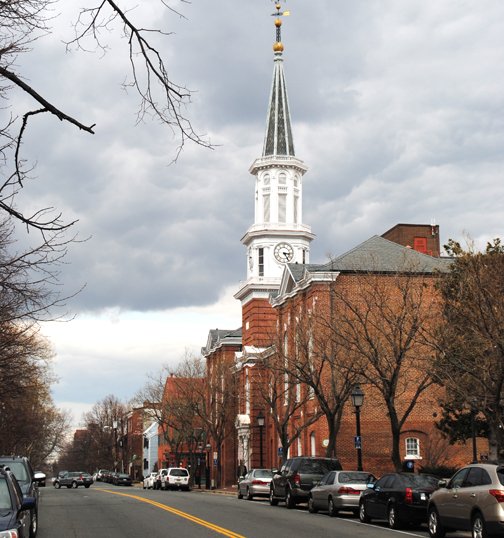
By Erich Wagner (File photo)
After years of putting off roadway repairs, Alexandria officials are gearing up to repave its most ailing streets.
In the fiscal 2015 capital improvement budget, city council allocated $4.3 million to road resurfacing, nearly double last year’s appropriation of $2.3 million. And city staff in turn will resurface 40 miles of city streets, up from around 18 to 21 miles in previous years.
Rich Baier, director of the city department of transportation and environmental services, said the 2015 fiscal year also marks the first full year his agency will use a more analytical method of measuring road health, called the pavement condition index. The tool, first employed last October, rates every road in the city on a scale of one to 100, with 100 being a road in perfect condition.
“If you do an average index for the entire city, weighing out all of the roadways, it’s 57, and Arlington’s average is at about 58,” he said. “So if you look at that, all the streets we’ll be doing this [fiscal] year are in the low 30s, in the 31 to 32 range. Basically we’re getting to the point where if we don’t restructure and repave them now, we’ll be completely rebuilding them in the future.”
Baier stressed that the decision to prioritize certain roads is not solely from a ride-ability standpoint, but instead is based on a street’s structural integrity. Once the base structure under the pavement of a road is compromised, it can cost anywhere from two to three times as much to fix, he said.
“Think of the wheel of a car sitting on top of a layer of pavement, with several layers of structure beneath it,” he said. “The pavement allows the load of a wheel to be distributed over a large structural area beneath the pavement itself. With base failures, the asphalt begins to crack, unravel and separate.
“Then water can get down [into the structure], and that’s what begins to cause failure.”
So roads bumpy with repeated pothole patches may not be in as dire straits as others, where long term damage is less noticeable to a driver.
Among streets up for repaving this year are segments of major thoroughfares like King Street, Eisenhower Avenue and Wheeler Avenue as well as residential roads like Taney Avenue, Duncan Avenue and Janneys Lane.
City Councilor Justin Wilson said the city was able to postpone road repairs during the recession because roads weren’t yet in poor condition.
“During the worst of the recession, council was always looking for ways to push things off, certainly in the late 2000s and early 2010s,” Wilson said. “Things like street repaving are easy to defer in tough times. But we heard in the last year or so some really impassioned pleas from the community to work on fixing up our roads again.”
While Councilor Del Pepper supports the new investment in road infrastructure, she said it’s still not enough to ensure no roads enter a state of failure. The recommended benchmark is for the city to repave around 10 percent of its roads each year — about 56 miles for the Port City.
“It’s never enough,” Pepper said. “I know they’ve been out there trying to patch up potholes and doubling the amount of lanes that they’re going to be working on. Even so, it really needs to be an all-out effort.”
Baier said he hopes to get closer to the 56-mile goal by applying for funding from the Virginia Department of Transportation as well as other grants and revenue sources. And he hopes council adds more money for the effort in the capital budget next year.
“Our goal is to increase the number of lane-miles each year,” he said. “Next year is slated for another 40, but the goal is to move that up again.”









